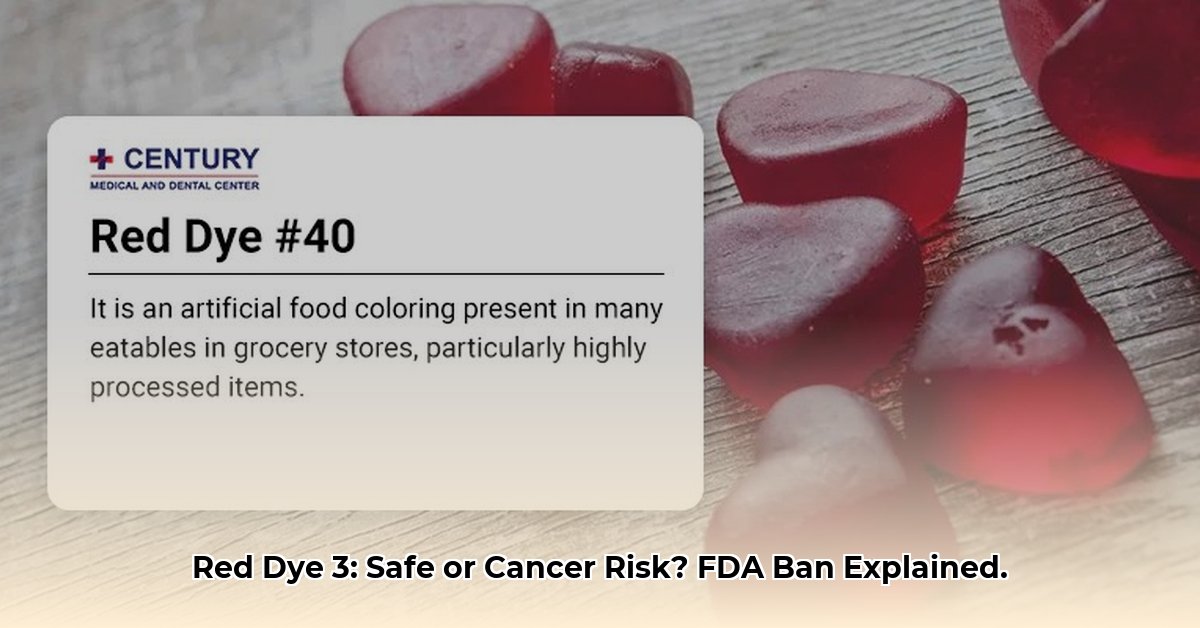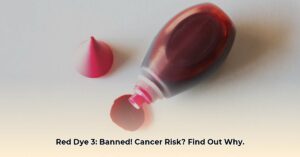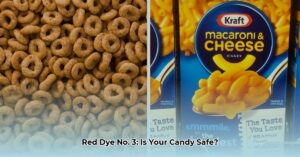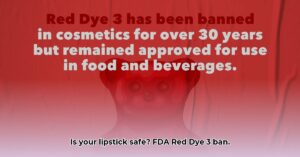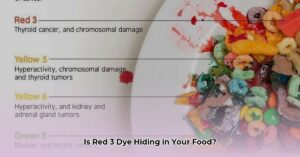Understanding the Red Dye 3 Ban
The FDA recently announced a ban on Red Dye 3, a synthetic food coloring, due to concerns about its potential health risks. Starting January 2027, Red Dye 3 will be phased out of food products, and by 2028, it will be removed from orally ingested medications. This decision marks a significant shift in food regulation and has prompted many consumers to seek more information about this common additive. This article provides a comprehensive overview of Red Dye 3, the reasons behind the ban, and how it might affect your food choices.
What is Red Dye 3?
Red Dye 3, also known as erythrosine or FD&C Red No. 3, is a synthetic dye used to give foods, medications, and cosmetics a vibrant cherry-red color. It has been a staple in the food industry for decades, adding appealing hues to everything from candies and baked goods to processed meats and beverages. While it enhances the visual appeal of these products, its safety has been a subject of debate for many years.
The Science Behind the Ban
The FDA’s ban stems primarily from studies conducted in the 1980s that suggested a possible link between Red Dye 3 and thyroid cancer in male rats exposed to high doses. While the FDA acknowledges that the effects observed in rats may not directly translate to humans, the agency invoked the Delaney Clause, a provision in the Federal Food, Drug, and Cosmetic Act that prohibits the approval of any food additive found to induce cancer in humans or animals.
Some research suggests that humans metabolize Red Dye 3 differently than rats, and organizations like the World Health Organization (WHO) and the Food and Agriculture Organization (FAO) have not found conclusive evidence of carcinogenicity in humans at typical consumption levels. However, other groups like the Center for Science in the Public Interest (CSPI) and the Environmental Working Group (EWG) have expressed ongoing concern, particularly regarding potential effects on children, who may be more susceptible. The FDA’s decision reflects a precautionary approach, prioritizing consumer safety even in the absence of definitive proof of harm in humans.
Identifying and Avoiding Red Dye 3
Learning to identify Red Dye 3 on food labels is an important step in making informed food choices. Look for the following names on ingredient lists:
- Red Dye 3
- FD&C Red No. 3
- Erythrosine
- E127 (used primarily outside the U.S.)
Common food products that previously contained Red Dye 3 include:
- Candies (e.g., candy corn, Hot Tamales, some gummy candies)
- Baked goods (e.g., some toaster pastries, cake frosting)
- Beverages (e.g., certain sodas, fruit drinks)
- Processed fruits (e.g., maraschino cherries, some canned fruit cocktails)
- Dairy products (e.g., some strawberry milk, ice cream, yogurt)
- Medications (e.g., some cough syrups, chewable vitamins)
Alternatives to Red Dye 3
Fortunately, many food manufacturers have already begun transitioning to alternative coloring agents, including natural options like:
- Beet juice (red/pink)
- Turmeric (yellow/orange)
- Paprika (orange/red)
- Fruit and vegetable extracts (various colors)
- Carmine (a natural red dye derived from insects – note that this may be an allergen for some individuals)
Consumers seeking Red Dye 3-free products can look for these natural alternatives on ingredient labels.
What If I’ve Consumed Red Dye 3?
If you’ve consumed products containing Red Dye 3 in the past, there’s likely no need for immediate concern. The potential risks associated with Red Dye 3 are thought to arise from chronic, high-dose exposure rather than occasional consumption. If you have any specific health concerns, consulting with a healthcare professional is always recommended.
Wider Implications and Future Outlook
The FDA’s ban on Red Dye 3 signifies a potential turning point in the food industry. It encourages manufacturers to explore and adopt safer, natural alternatives, potentially leading to healthier food options for consumers. The ban may also prompt further research into the long-term health effects of other artificial food colorings and additives, contributing to a broader conversation about food safety and regulation.
This decision highlights the dynamic nature of scientific understanding. What is considered safe today may be re-evaluated in the future as new research emerges. Staying informed empowers consumers to make conscious choices about their diet and advocate for transparency and safety in the food supply.
FAQ
Q: Is Red Dye 3 definitely carcinogenic in humans?
A: Current research suggests a possible link between Red Dye 3 and thyroid cancer in rats, but the evidence in humans is less conclusive. More research is needed to understand the potential risks fully.
Q: Will the ban affect the taste or appearance of food?
A: Food manufacturers are using alternative coloring agents, some natural and some synthetic. While the exact shade of red may vary, the change in taste should be minimal.
Q: What should I do if I’m concerned about other food additives?
A: Resources like the EWG’s Food Scores database provide information and ratings on various food additives, allowing consumers to make informed decisions. Consulting with a registered dietitian can provide personalized guidance based on individual dietary needs and concerns.
Disclaimer: This information is intended for educational purposes only and should not be considered medical advice. Consult with a healthcare professional for any health concerns.

